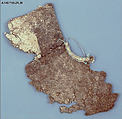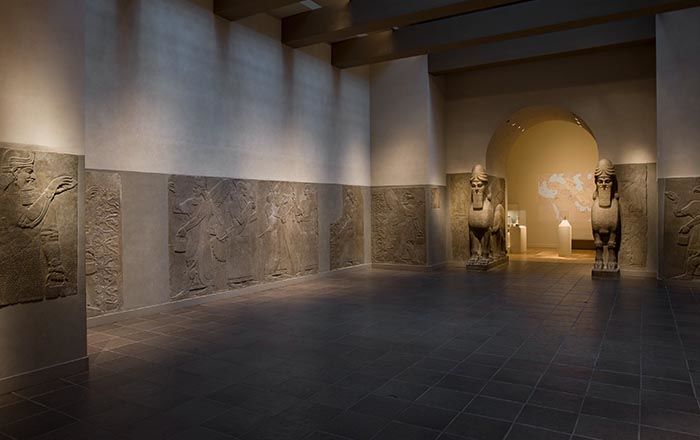Textile fragment
Not on view
This textile fragment is part of the shoulder and neckline of a garment. It is made of cotton-lined felt, and has a blue silk cord to secure the opening at the neck. Given its small size, it was likely made for a child. It was excavated at Shahr-i Qumis in northern Iran, which has been identified as the ancient city of Hecatompylos, established by the Parthians as their capital by about 200 B.C. In Greek Hecatompylos means ‘a hundred gates,’ suggesting that the city was quite large. Indeed, the modern archaeological site includes several mounds, only a few of which have been excavated, and a vast area covered with potsherds. It comes from Site IV, a large building which was completely filled with dirt sometime in the late 1st century B.C. or early 1st century A.D.
The silk cord on this fragment is the earliest known piece of silk yet discovered in Iran, and in all likelihood it was imported from China via the overland caravan routes commonly called the ‘Silk Roads.’ Indeed, the Parthians were the primary middlemen in the trade between Rome and China in this period.
This image cannot be enlarged, viewed at full screen, or downloaded.
This artwork is meant to be viewed from right to left. Scroll left to view more.


.tif)
